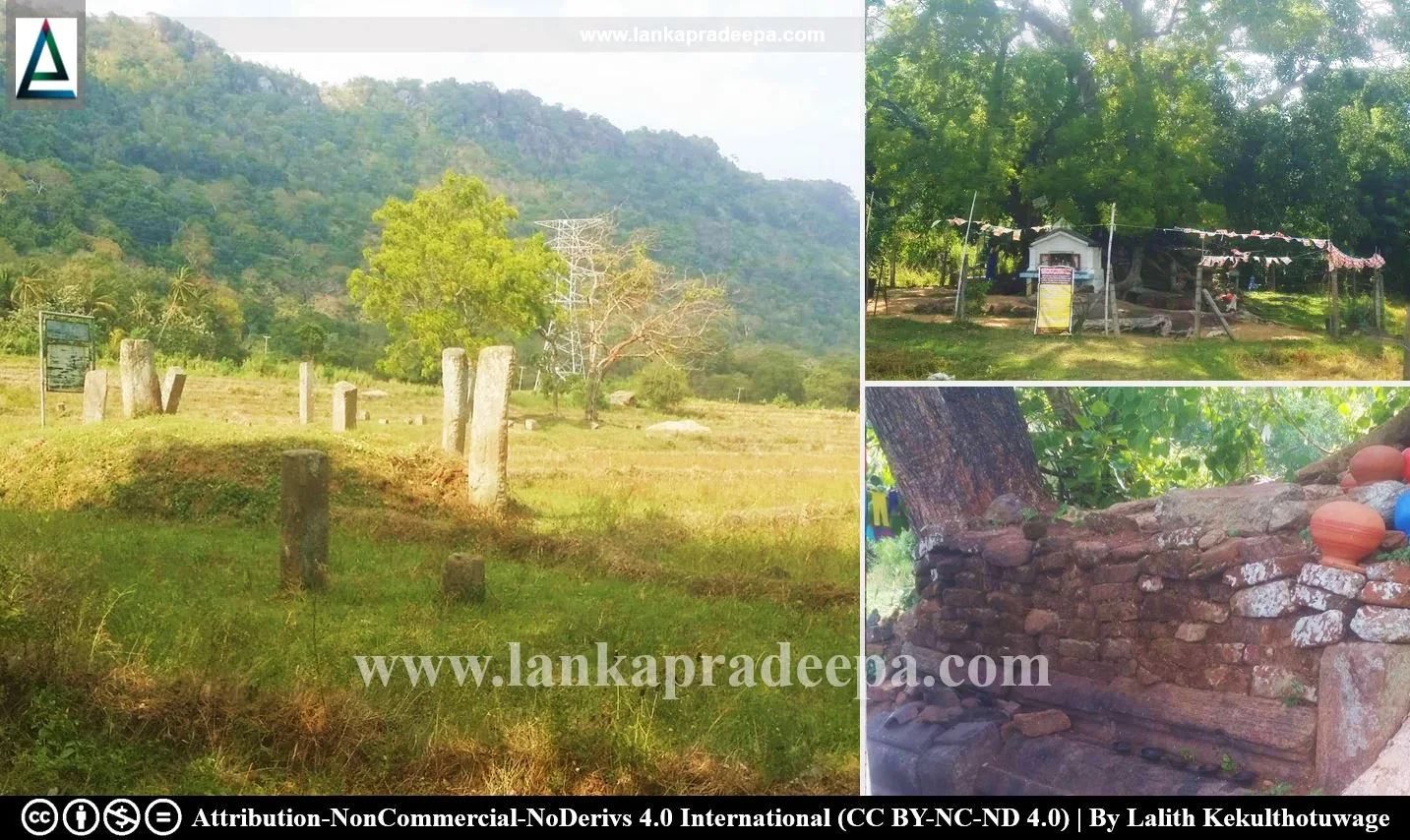 |
| Figure 1: Scattered ruins across the paddy fields, the ancient Bodhi tree and its parapet walls at Sandagiriya |
.
Handagiriya Ancient Place (Sinhala: බලංගොඩ හඳගිරිය පුරාවිද්යා ස්ථානය) is probably a ruined town or a nucleus of a historic settlement in Handagiriya village located to the northwest of Udawalawe National Park in Ratnapura District, Sri Lanka.
The history of Handagiriya is obscure. It is believed to have been a prosperous area from the 2nd century B.C. to the 15th century A.D. and was later deserted. Vidagama, writing in the 54th year of the reign of King Parakramabahu VI (1412-1467 A.D.) of Kotte, mentioned in the preface of his poem, Kawmini Maldama that he was born in a city named Sandagiri Nuwara (Collins, 1932).
The ruins of Handagiriya are scattered in an area of several square miles. The majority of the ruins are stone pillars standing in paddy fields. The remains of several ancient tanks, a large heap of ancient bricks where a Stupa once stood and a Bodhi tree surrounded by a finely carved brick wall are among the other ruins at the site. The pillars indicate a fairly extensive range of substantial buildings and the large heap of bricks near the Bodhi tree, according to local tradition, is a work of King Valagamba (103, 88-77 B.C.) of Anuradhapura (Collins, 1932).
In the past, this ancient town may have stretched from the banks of the Walawe Ganga River up to the foothills and the trace of an old road leading to the river has been identified (Collins, 1932). Several of the tracts of fields still preserve the names related to an old town that existed here such as Vidiya-yaya (Street tract), Maliga-godella (Palace mound) and Murapola-atura [(Guard station) Collins, 1932].
Attribution
#) LankaPradeepa.com extends its gratitude to Lalith Kekulthotuwage for providing the necessary photographs required for this article. All the photos are published here with the permission of the author.
References
1) Collins, C.H., 1932. The archaeology of the Sabaragamuwa Bintenna. Journal of the Ceylon Branch of the Royal Asiatic Society, Vol. XXXII, No 85. pp.158-184.
Explore Other Nearby Attractions
Location Map (Google)
This page was last updated on 6 November 2023

